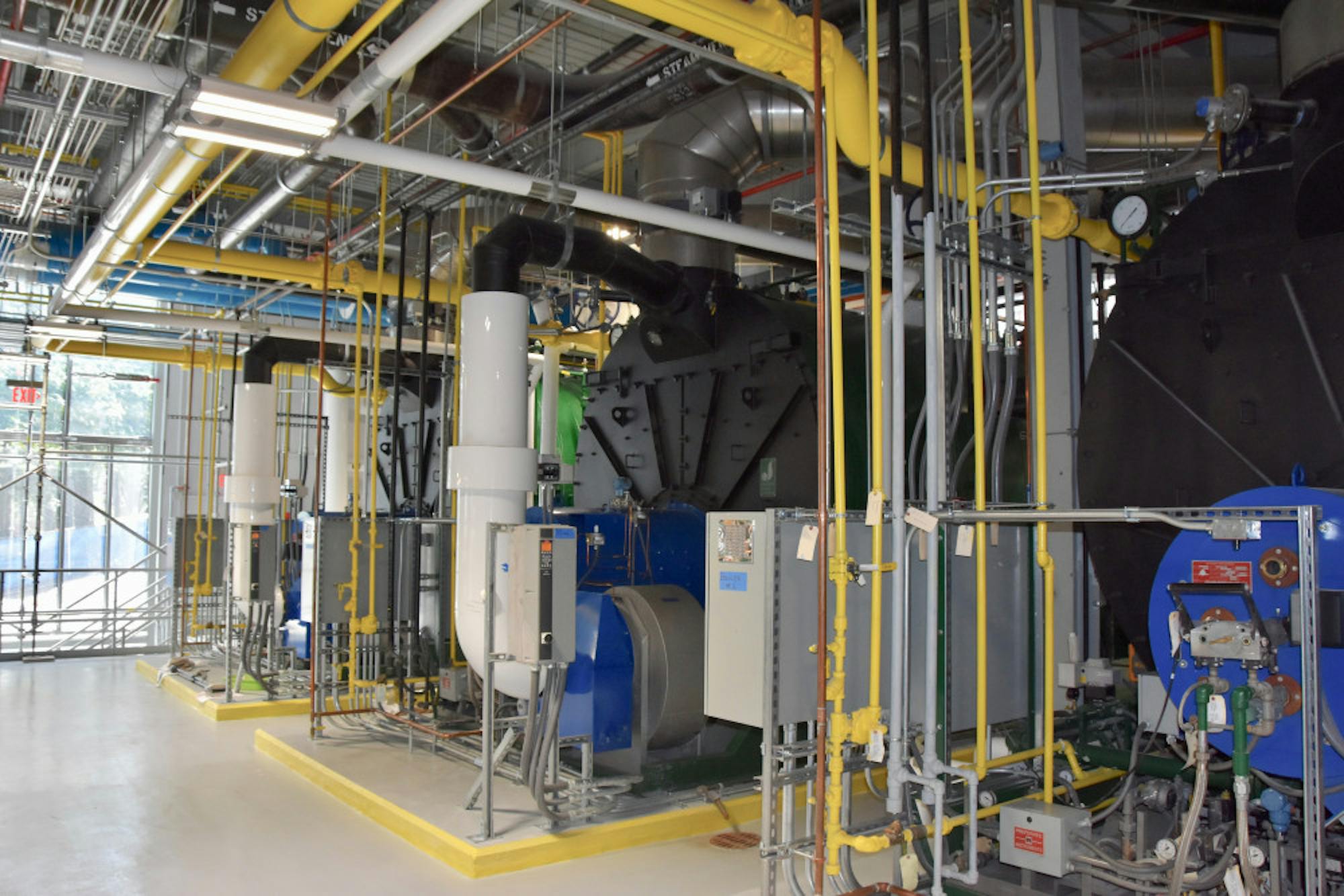Tufts worked on two major construction projects this summer, making significant progress on the Central Energy Plant (CEP) on the Medford/Somerville campus and installing two new solar installations at the Cummings School of Veterinary Medicine. Both projects were aimed at making the university more environmentally sustainable.
Construction on the new CEP on Boston Avenue next to Dowling Hall, began in the spring of 2015, and is managed by O’Connor Constructors. The CEP was initially slated to open in the fall of last year, but its timetable fell significantly behind schedule due to weather-related setbacks and the difficulties of building on the steep terrain of the build site, according to the Director of University Energy Project Randy Preston.
Preston, who oversaw the design and construction of the plant, nevertheless expressed confidence that the CEP will be operational within the next six months.
In an email to the Daily, Preston estimated that the total cost will come to around $50 million. This is four million dollars higher than what former Vice President of Operations Linda Snyder projected in 2015. Preston said the plant’s projected lifespan is approximately 30 years, so the university should more than break even in the long run.
Over the summer, the CEP's cogenerator topped with 16 pistons was installed on the ground floor of the new plant. On the next floor are three boilers: two to cover the regular hot water needs of the university during the winter months and a third to back the others up in the case of extenuating circumstances and to be an additional source of power as the campus expands, according to Preston. Across from these boilers, a screen-and-dial-plastered control room commands a view of the plant’s interior.
The primary impetus to build the CEP was to replace the existing 60-year-old energy plant, which is at the end of its lifespan, Snyder told the Daily in 2015. The new plant was also created to realize certain sustainability goals outlined by the Campus Sustainability Council in its 2013 report, according to Snyder.
"The Campus Sustainability Council was founded in 2012 by President Monaco when he came here, and they did some research and made recommendations for the university for goals for water, waste and energy emissions, and then this other category called cross-cutting issues, which encompass everything," Communications Specialist at the Office of Sustainability Lauren Diamond said.
The new plant’s cogenerator and boilers will use the same fuel sources as the old -- primarily natural gas, supplemented by No. 2 fuel oil, Preston said. However, it uses this fuel more efficiently than its predecessor, burning less of it to achieve the same electrical output and decreasing the campus’ dependence on the municipal electric grid, according to Shoshana Blank, education and outreach program administrator at the Office of Sustainability. It also harnesses the waste heat generated by the fuel burning process to heat and cool water for campus buildings, she added.
Overall, the CEP is expected to decrease energy costs for the Medford/Somerville campus by around 20 percent, according to an article on the Tufts Construction website.
“The new CEP is designed to reduce greenhouse gas emissions by 4,637 short tons, or a 14.1 percent reduction in the Medford campus greenhouse gas emissions,” Preston told the Daily in an email.
Blank explained that Tufts sold "credits" for this greenhouse gas reduction through a market for greenhouse gas emitters in Massachusetts. This ensures that -- on paper -- those entities are emitting below legal levels, and the state's overall emissions decrease.
“Technically, this project helps Tufts to reduce our greenhouse gas [GHG] emissions, however we cannot claim that reduction in the Tufts GHG inventory because Tufts sold the alternative energy credits,” Blank said.
However, while the natural gas the CEP uses “burns cleaner” than alternatives such as coal or oil and expels a lower quantity of greenhouse gases and harmful particulates, environmentalists are concerned that the upstream effect of natural gas extraction on the environment negates its advantage as a fuel source. Blank alluded to the destructive impact of hydraulic fracturing as an example.
The CEP was not the only sustainability-focused project at Tufts this past summer, however. Two new solar arrays were installed at the Cummings School of Veterinary Medicine on the Grafton campus in Grafton. These installations will provide the Grafton campus with about 40 percent of its power, and save the university as much as $5.3 million over 20 years, according to a TuftsNow article.
The arrays were built, owned and paid for by NRG Energy, Inc.; Tufts does not own the Renewable Energy Certificates of the Grafton solar cells. Based on a 20-year contract between Tufts and NRG, Tufts has the right to buy the energy generated by the cells at a rate that is 60 percent cheaper than it would be to buy electricity from the grid, according to Blank.
According to Preston, Tufts Facilities Services also worked to install 75 new energy-efficient windows in Miner Hall and the Crane Room of Paige Hall. This took place in addition to completion of work on the Science and Engineering Complex (SEC), which opened this fall and was designed to meet the Leadership in Energy and Environmental Design (LEED) Gold standard, according to the Tufts University construction website.
Preston said the university will continue to take on construction projects with sustainability in mind.
“We will spend between 30 to 40 million dollars on Deferred Maintenance projects always with an eye to sustainability," Preston said. "Lab improvement and housing projects in Medford and ongoing capital renewal in Boston, currently underway, will be environmentally-focused.”
Tufts aims for sustainability goals with summer construction projects






